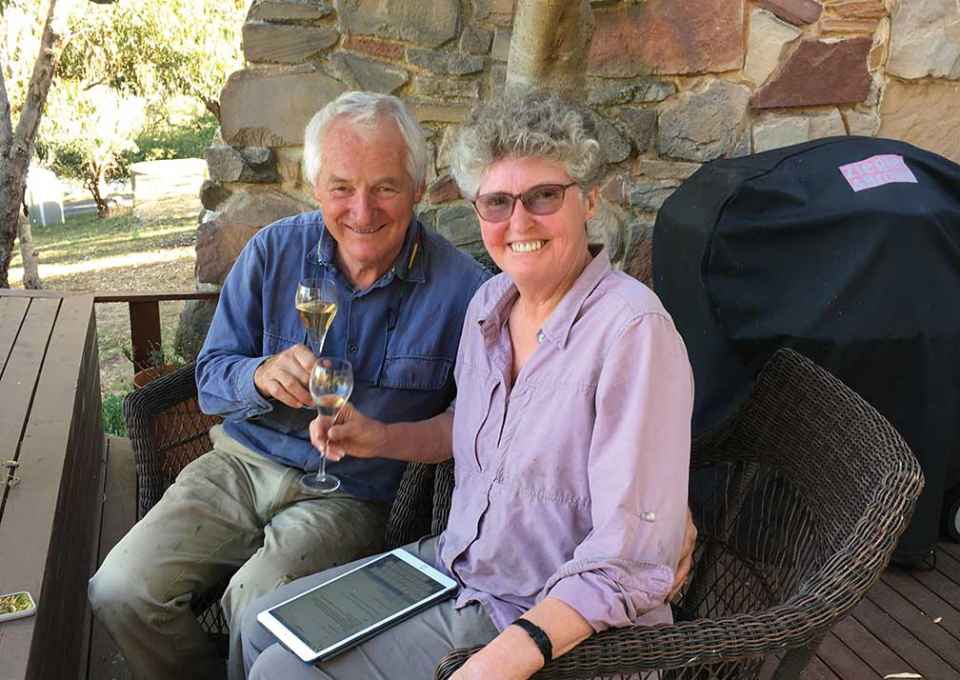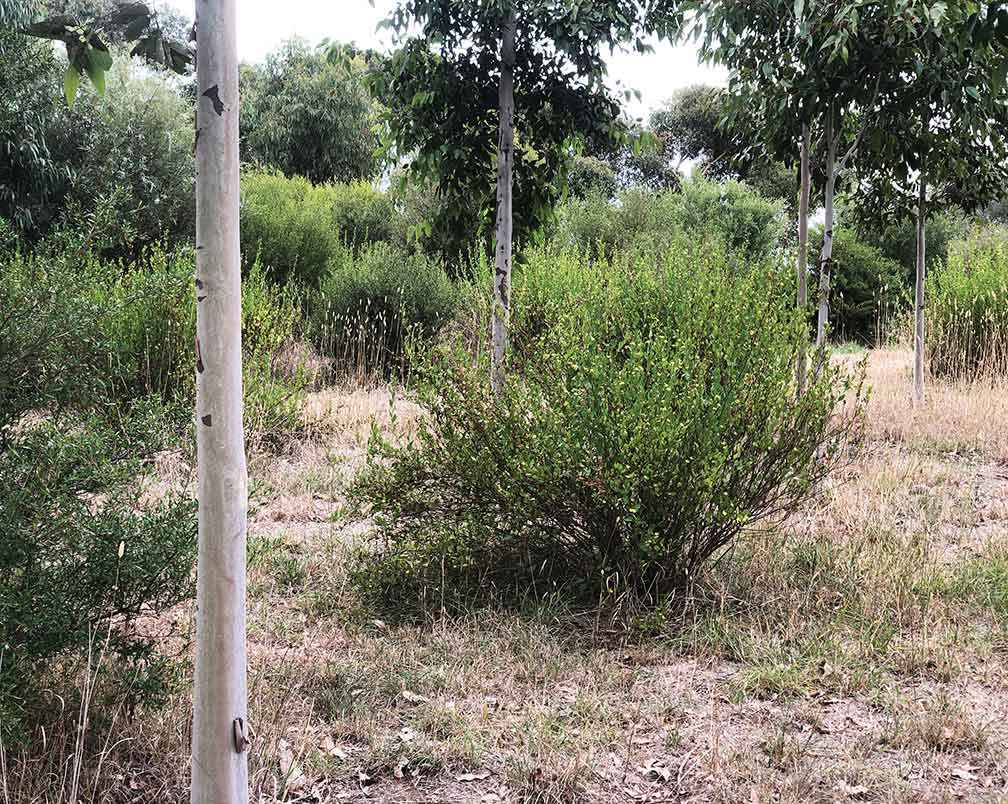Victorian Landcare Magazine - , Issue 89

Geoff and Joan Anson’s biorich journey started in 1998 when they moved to the Barrabool Hills to establish a vineyard. High on their priorities was to make their enterprise sustainable and this involved fencing off remnant vegetation, planting shelterbelts and planting a mixed block of eucalypts for agroforestry. In the gully below the vineyard, a wetland was planted with bog plants to support the freshwater crays. However, there was the ever present 4.5-hectare problem area on the dry northern side of their hill.
Adopting sustainable design principles, they planted a diverse list of mostly local species. These were grouped in clumps of the same species to create the vegetation layers found in healthy remnant woodlands. Red ironbark was planted next to a large group of saltbush growing near patches of wallaby grass. These layers all support bird and insect life.
Their planting included 25 species of approximately 800 canopy trees, 800 understorey and 2400 shrubs. These were grouped in same species clumps of up to 20 for the canopy and understorey, and 20–40 for the shrubs. The taller trees were planted in aesthetically
appealing groups to provide a wow factor and early shelter across the vineyard. Grouping also improves the germination of the next generation of each species through better pollination.
“Imagine, clusters of grey cypress pine, (Callitris glaucophylla) waving in the breeze, next to bold canvasses of blooming golden wattle, (Acacia
pycnantha), or stands of stately silver banksia, (B. marginata),” Geoff said.
After seven years the change has been dramatic. Gums tower overhead, hundreds of mature shrubs are flowering, and wildlife is much more present. Many of the plants are now mature enough to collect seed and cuttings. Bee hives in the plantation provide honey for the kitchen and for sale through the cellar door.

Above: Vegetation layering enhancing wildlife habitat at Barwon Ridge Winery, showing a canopy of form-pruned spotted gum with a shrub layer of hop goodenia and giant hopbush.
I visited on a warm sunny day in early spring 2019 to help Geoff and Joan form-prune some of their clumps of forestry trees, many of them well over six metres tall in just four years. The layered woodland they had created by grouping indigenous shrubs and understorey next to majestic form-pruned spotted gum, (Corymbia maculata), and red ironbark, (Eucalyptus sideroxylon), was both picturesque and productive. They had allowed convenient access for pruning and harvest by grouping their forestry trees along the edge of a natural access track that snaked its way through the interior.
The structure of the 4.5-hectare plantation sheltered their vineyard from the damaging west winds and linked with earlier two and three row boundary plantings. The many small birds that lived in the woodland’s clumps of shrubs formed an integral part of Geoff and Joan’s insect management strategy.
Geoff Anson reflects on pushing aside thick wattle branches to be presented with a flock of sweeping, squawking black cockatoos.
“The cockatoos perch precariously in the trees and feed noisily on pin cushion hakea seed. It’s a stunning difference to the weed-infested paddock five years previously. The area has been recreated to become both a place of exuberant biodiversity and uplifting reflection,’ Geoff said.